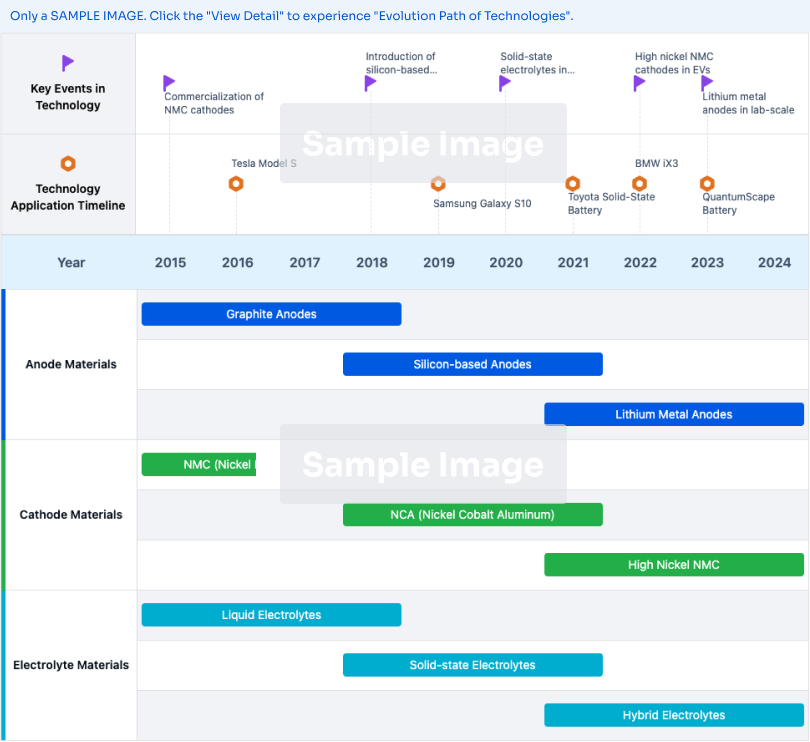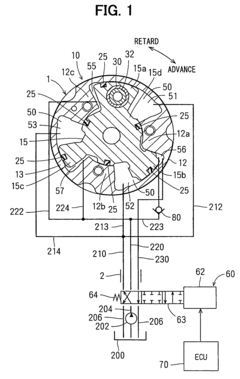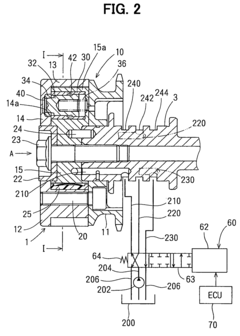Increasing The Productivity Of Check Valves
Increasing The Productivity Of Check Valves: Technology Background And Goals
The analysis will delve into the fundamental principles and mechanisms underlying check valve operation, examining factors that impact their efficiency, reliability, and overall performance. By understanding the root causes of productivity constraints, the report aims to pave the way for targeted research and development efforts to enhance check valve productivity across various industrial applications.
Check Valve Market Demand Analysis
- Market Size and Growth
The global check valve market is expected to witness significant growth, driven by increasing demand from industries like oil and gas, chemical processing, and water treatment. Factors such as infrastructure development, urbanization, and the need for efficient fluid control systems contribute to market expansion. - Industry Trends
Key trends shaping the check valve market include the adoption of advanced materials for improved durability and corrosion resistance, the integration of smart technologies for remote monitoring and predictive maintenance, and the demand for compact and lightweight designs for space-constrained applications. - Application Sectors
Check valves find widespread applications across various sectors, including:- Oil and gas: Used in pipelines, refineries, and offshore platforms for controlling fluid flow and preventing backflow.
- Chemical processing: Essential for regulating the flow of corrosive and hazardous materials.
- Water and wastewater treatment: Employed in water distribution systems and sewage treatment plants.
- Power generation: Utilized in power plants for controlling steam and coolant flow.
Check Valve Technology Status And Challenges
- Valve Design Limitations
Current check valve designs have inherent limitations that restrict their efficiency and performance, such as high pressure drop, flow turbulence, and wear-related issues. - Material Constraints
The materials used in valve construction can impact durability, corrosion resistance, and overall lifespan, posing challenges in harsh environments or demanding applications. - Installation and Maintenance Challenges
Proper installation and regular maintenance are crucial for optimal valve performance, but can be difficult and costly, especially in hard-to-access locations. - Flow Dynamics Complexities
Understanding and controlling complex flow dynamics, such as backflow, water hammer, and cavitation, remains a significant challenge in check valve design and operation. - Regulatory and Safety Concerns
Stringent regulatory requirements and safety standards must be met, particularly in critical industries like nuclear power and oil and gas, posing design and testing challenges.
Increasing The Productivity Of Check Valves: Technology Evolution Path

Check Valve Current Technical Solutions
01 Check Valve Structure and Components
This section covers the structural design and components of check valves, such as valve bodies, seats, discs/balls, and sealing mechanisms, contributing to their efficient operation and sealing performance.- Check Valve Structure and Components: This section covers the structural design and components of check valves, including valve bodies, seats, discs/balls, and sealing mechanisms, contributing to their efficient operation and sealing capabilities.
- Check Valve Applications and Installation: This section focuses on various applications and installation methods for check valves in different industries and systems, such as fluid handling, piping, and process control, covering selection and placement for optimal performance.
- Check Valve Materials and Coatings: This section relates to materials used in check valve construction, including metals, plastics, composites, and coatings/surface treatments for improved corrosion resistance, wear resistance, and other properties.
- Check Valve Maintenance and Repair: This section covers techniques and methods for maintaining and repairing check valves, including inspection, cleaning, component replacement, and troubleshooting procedures to ensure optimal performance and extend service life.
- Check Valve Testing and Performance Evaluation: This section focuses on methods and equipment for testing and evaluating check valve performance, including flow rate, pressure drop, leakage, durability tests, and techniques for analyzing and optimizing performance.
02 Check Valve Applications and Installation
This section relates to various applications and installation methods of check valves in different industries and systems, such as fluid handling, piping, and process equipment, covering their integration and suitability for different operating conditions.03 Check Valve Materials and Coatings
This section focuses on materials used in check valve construction, as well as coatings/surface treatments to improve performance, durability, corrosion resistance, or wear resistance, enhancing productivity and lifespan.04 Check Valve Manufacturing and Assembly
This section covers manufacturing processes and assembly techniques used in check valve production, including casting, machining, welding, and assembly methods, contributing to increased productivity and cost-effectiveness.05 Check Valve Testing and Performance Evaluation
This section relates to testing and performance evaluation of check valves, including methods for assessing sealing capabilities, flow characteristics, and durability under various operating conditions, ensuring productivity and reliability.
Increasing The Productivity Of Check Valves: Main Player Analysis
Cameron International Corp.
Robert Bosch GmbH
Check Valve Key Technology Interpretation
- A check valve is included to prevent the working fluid from flowing out of the advance hydraulic chamber during phase control, improving the responsivity of phase control to the advance side.
- Multiple retard hydraulic chambers and advance hydraulic chambers are used, increasing the area where the driven rotary body receives pressure from the working fluid, even in engines with little torque variation.
- The check valve is not placed in the retard passage, reducing the number of parts and fluid passages required.
Check Valve Productivity Improvement Economic Analysis
Check valves are essential components in various industrial applications, ensuring efficient and safe fluid flow control. Improving their productivity can lead to significant economic benefits for businesses. This economic analysis aims to evaluate the potential cost savings and revenue gains associated with enhancing check valve productivity.
By optimizing check valve performance, businesses can reduce maintenance costs, minimize downtime, and extend equipment lifespan. Increased productivity also translates into higher throughput and production capacity, enabling businesses to meet growing demand and capture new market opportunities. Furthermore, improved energy efficiency resulting from optimized check valve operation can lead to substantial cost savings in energy consumption. This analysis will consider factors such as the initial investment required for productivity improvements, potential revenue increases from higher production output, and cost reductions from reduced maintenance and energy consumption. By quantifying these economic impacts, businesses can make informed decisions about investing in check valve productivity enhancements and assess the potential return on investment.
Check Valve Productivity Improvement Policy And Regulatory Impact
Check valves are essential components in various industrial applications, ensuring the unidirectional flow of fluids and preventing backflow. Improving their productivity is crucial for enhancing operational efficiency and reducing maintenance costs. This section examines the policy and regulatory landscape that impacts the productivity of check valves.
Regulatory bodies, such as industry associations and government agencies, play a pivotal role in establishing standards and guidelines for check valve design, manufacturing, and performance. These regulations aim to ensure safety, reliability, and consistent quality across different industries. Compliance with these regulations is mandatory and can influence the productivity of check valve operations. Furthermore, environmental regulations and sustainability initiatives may impact the materials used in check valve construction, potentially affecting their durability and maintenance requirements. Policies promoting energy efficiency and resource conservation could drive the development of more efficient check valve designs, leading to improved productivity.










